Aging Magnificence in Springtime Budapest
Edward Branston and his wife explore the Hungarian capital over a long weekend. Discovering a city whose chequered past bestowed on its citizens an opulent way of life: from hot spring baths to incredible architecture, from trendy night-spots in crumbling back-streets to delicious, wholesome goulash – Budapest is rightly one of Eastern Europe's true gems.
Budapest is arguably one of Eastern Europe's most alluring cities, endowed with an abundance of architecture, history and culture that few other conurbations can match.
Indeed, grandiose Budapest seems like it should be the capital of a much larger country. But given how much power was once concentrated here – through the Habsburg, the Ottoman and the Austro-Hungarian empires – its splendour is easy to understand.
Corinthia Hotel
With so much to enjoy, experience and digest, it was perhaps a mistake on the parts of my wife and I to book into the Corinthia. This wondrous hotel is such a delight that it seems wrong not to spend most of one's time here. Entering through the grand, neo-classical facade, we floated into the creamy marble lobby and, after checking in, rose up the sweeping central staircase to our opulent room.
With its high ceilings and ornate decor, the Corinthia offers a sense of spaciousness and light that I have seldom experienced in other hotels.
But as comfortable as the Corinthia was, the many treats of Budapest awaited us. My wife and I rose from our big, soft bed after a brief slumber and headed out in search of the Gellertbath.
Gellertbath
We emerged into the bright spring sunshine, with the sense that winter had only recently relented, and strolled towards our destination on the far bank of the Danube. Costing around £12, the Gellertbath is located in the famous old Gellert Hotel on the river and offers an opulent bath and spa experience in gracious art nouveau surroundings.
Locals and visitors alike soaked themselves in the hot, gas-blue waters – as did we.
But as relaxing as the bath was, my wife and I agreed that we hadn't really earned it. We decided to undertake some serious sightseeing before we enjoyed out next hot-spring dip!
Castle Hill Funicular and Buda District
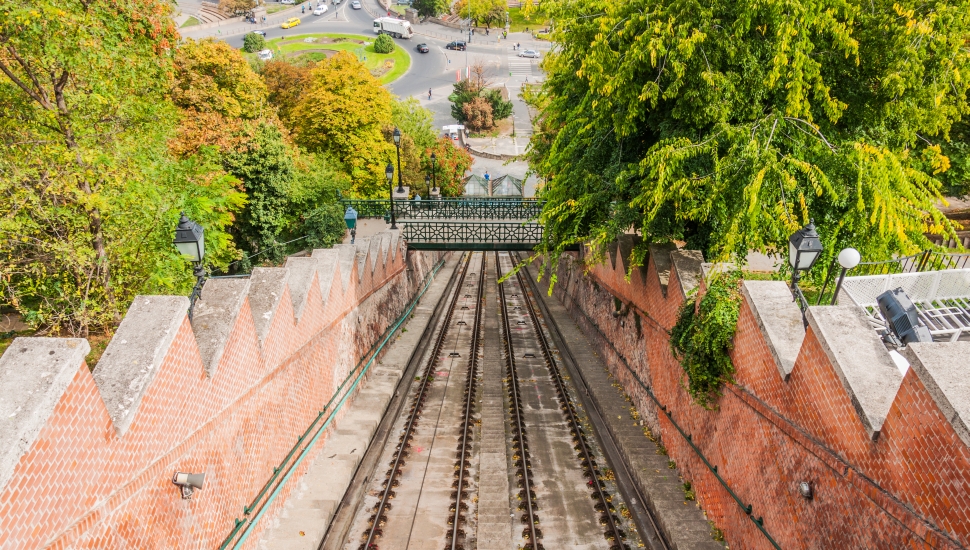
After lunch we made our way to the Castle Hill funicular and squeezed ourselves into one of its ancient carriages. Introduced in 1870, these cars climb slowly to old Buda – a calm, pedestrianised and wholly historic district. Here you can saunter around the Royal Palace, reconstructed in the 18th century by the Habsburgs. These days it's home to the Hungarian National Gallery (mng.hu/en).
Matthias Church
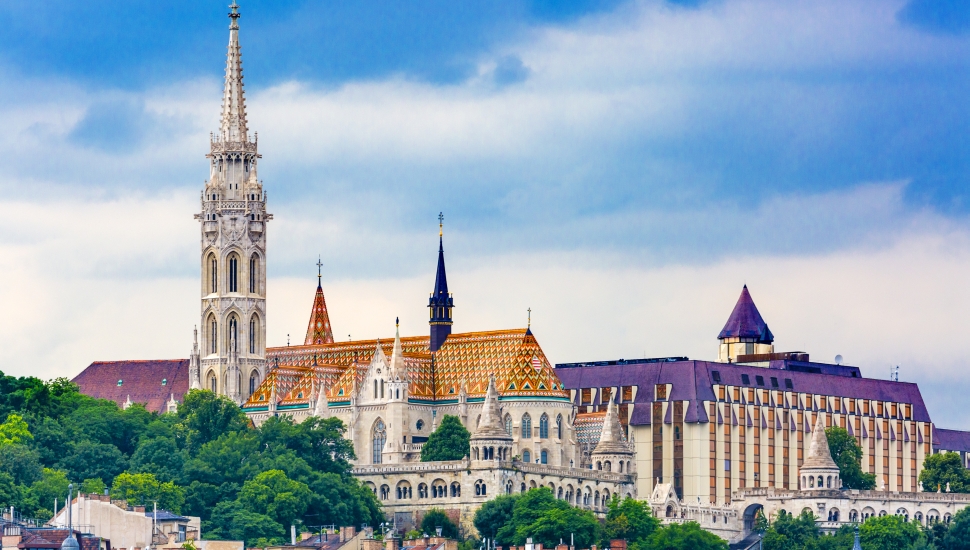
Of special note was the splendid bronze Matthias fountain, which depicts a traditional hunting expedition. We then strolled along the cobbled streets to Matthias Church, which presented us with cool, grand interiors and a fantastic coloured-glass roof.
Here we found a pleasing Madonna statue in a recess. But this was no ordinary Christian relic: legend has it that in 1686, while the occupying Muslims were attempting to repel a siege of Buda by the Holy League, a large explosion shattered a plaster wall and revealed the statue to the Muslims. The sight of the Madonna prompted the occupiers to flee. The story goes that before the Muslims occupied the church, the Christian incumbents hid the statue behind a wall to prevent it from being pillaged.
St Stephen's Basilica & Hungarian State Opera
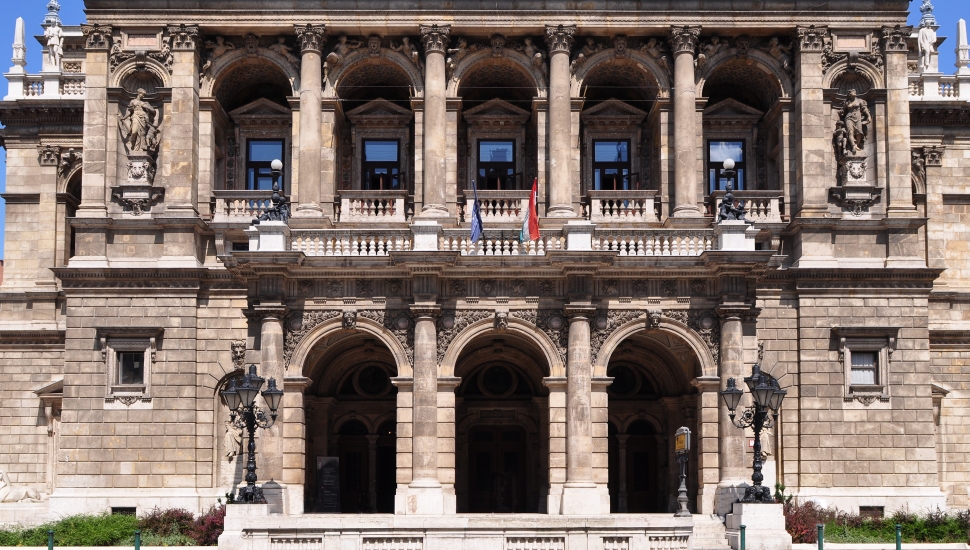
Doused in spring sunshine we walked further into Pest, pausing to admire St Stephen's Basilica and the Hungarian State Opera, before hopping onto the 1896 M1 line – one of the oldest underground train routes in Europe.
Városliget
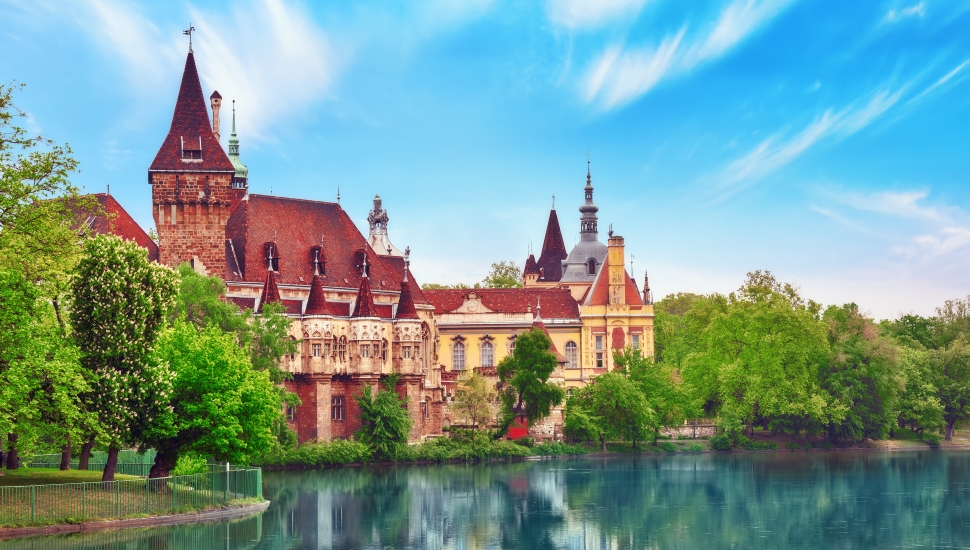
We alighted at Városliget, the city park built in the English style, complete with boating lake and pretty green spaces filled with local families.
After returning to our hotel room for a nap, we enjoyed a mouth-watering lamb dish complete with pancetta and fried quail eggs in the Brasserie & Atrium.
Szimpla Kert bar
On the advice of the kind and helpful waiting staff, we strolled a few blocks to Szimpla Kert, a trendy semi-ruined bar in a crumbling courtyard. It was a pleasant mix of locals and tourists, and gave us a chance to sample some fruity local wines. An eclectic mix of bric-a-brac gave this bar a unique charm, although as the night wore on the clientele got a little boisterous for us and we retired to the tranquil ambience of the Corinthia for a night cap.
In the morning we took a dip in Corinthia's spectacular pool, complete with multi-coloured glass roof. Having developed an appetite after swimming, we relished the buffet style breakfast, which if anything had too many items to choose from.
Danube River Cruise
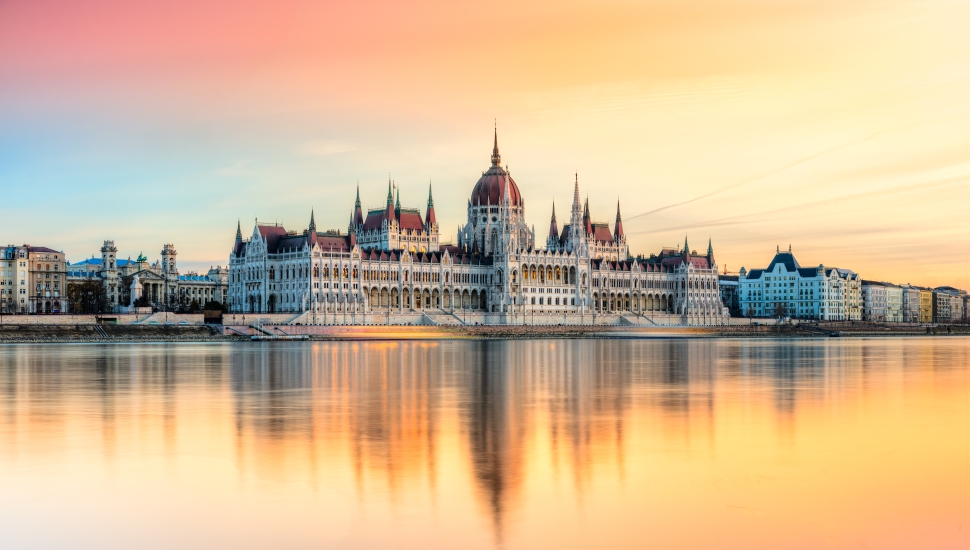
Wasting no time, we walked down to the mighty Danube for a short river cruise, which included a fascinating audio history of the key sights. The Gothic Revival Parliament Building was easily the most stunning, modelled on its counterpart in the UK. For just £10, this cruise is a great way to make sure you get to see most of the city's main sights – useful if, like us, your time is limited.
More information on river cruises: legenda.hu
Margaret Island
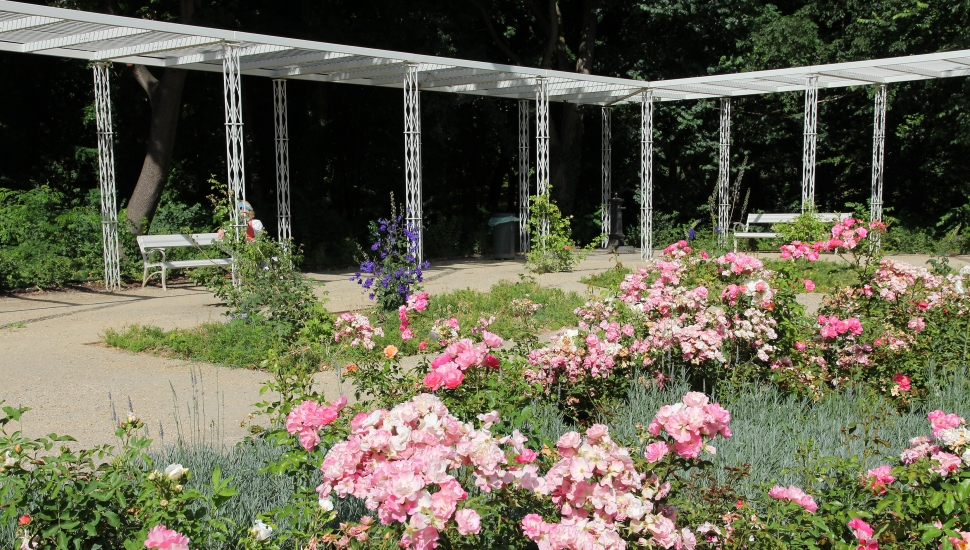
We stepped off the boat at Margaret Island and enjoyed a sunny stroll through this wooded island park, connected by two bridges (hids) at each end: the Arpad and the Magrit Hid. We admired the pretty rose garden and a number of medieval ruins, before returning to the eastern bank via the Magrit hid and strolling back to our hotel.
After a leisurely loaf in our majestic room and then by the balmy pool, we decided it was time for even more loafing – and this time we'd earned it.
Széchenyi Thermal Bath
The Széchenyi Thermal Bath is rightly one of the city's best known – and by all accounts the most fun. Here the great and the good of Budapest gather to enjoy the therapeutic effects of the hot spring waters. It's one of dozens of natural spring baths in the Hungarian capital, under which burbles countless gallons of the healing wet stuff through 125 thermal springs. As a couple we chose a time which permitted mixed sexes and submerged ourselves in the piping hot waters, while enjoying watching Hungarians young and old do the same.
Blue Rose Restaurant for Goulash
Eating in the Corinthia is a wonderful experience – but it's also wonderfully expensive. Keen to cut our expenses and eat like locals, we looked up one of the city's best goulash restaurants.

We hit upon the Blue Rose Restaurant, famed for a superior output of Hungarian national cuisine. We ordered goulash soup, chicken paprikash and grilled cheese – and devoured them all. At only a fraction of the cost of a Corinthia meal, the price alone was worth coming, but it was also great to experience a real Hungarian eatery, frequented by a clientele who were mainly local.
Budapest by Night
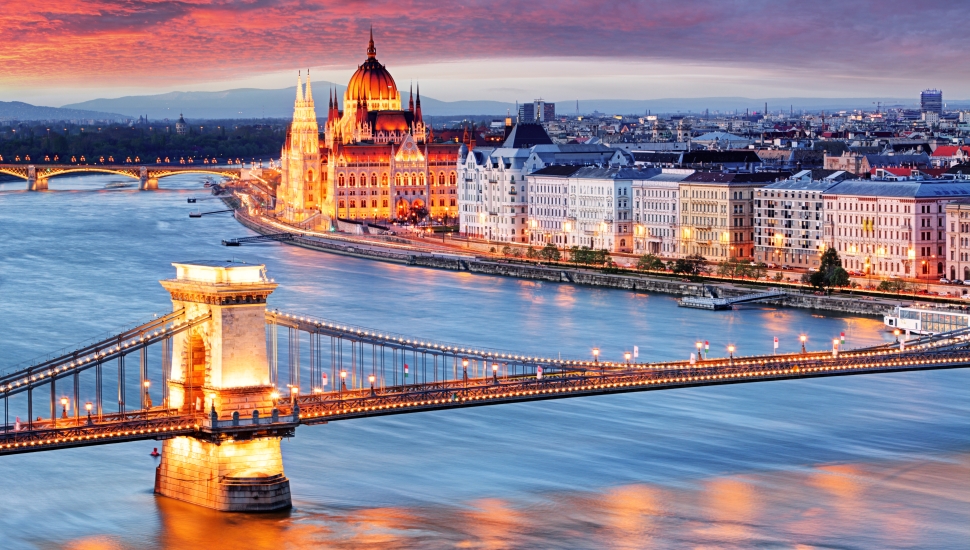
Satiated by the warming Hungarian food, we took a taxi back to the riverside where we strolled over the Széchenyi Chain Bridge as night fell. Designed by an Englishmen and engineered by a Scotsman, this bridge takes its name from the mighty iron chains that suspend it over the Danube.
From here was gazed left and right, to Buda and Pest and marvelled at the city's glittering night-time magnificence. When it comes to aging grandeur, few cities do it quite like Budapest. We both knew we would return.
Get a Quote